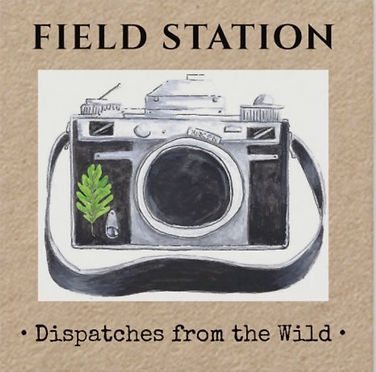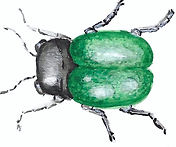April is For the Birds
- fieldstation
- Apr 28, 2023
- 3 min read
Updated: May 7, 2023

April is a time for renewal and for life to abound again after a long winter. Spring Beauties, Bluebells, and other ephemerals begin to secretively peek out from under leaves in the forests and meadows. The Spring Peeper frogs call to each other in unison at dusk. And the arrival of the Red-winged Blackbird seen perched on cattails signifies that migrating spring birds are on their way back, filling us with the hope that warmer weather is just around the corner. It is no wonder that April is also our national month of hope and a time when we often think about the beauty and meaning of birds. I have written a snail mail letter on this idea and about an amateur ornithologist who found hope through birding, named Phoebe Snetsinger. Her story about overcoming adversity in her life by finding hope was truly inspiring.

My thoughts about birds first came to me on a spring ski trip to Steamboat Springs, Colorado when I found a most unusual bird that seemed to be everywhere and not in the least bit fearful of being in the company of people. It was the Black-billed Magpie. This medium-sized crow-like bird was black and white and had a stunning blue-green iridescence to its wings and tail when it turned slightly. It pecked on the ground around the cafes and seemed crafty in its ability to get at things it wanted. They were mesmerizing to watch. I must say, there’s a kind of feeling one gets when traveling to places where the local wildlife is different from what is normally seen back home. It imparts the sense of being far away. I sure felt that I was not in Indiana anymore when I was with the Magpies and amongst the mountain snow and thin air.

I set about trying to capture a bit of them in my nature journal that I brought along to use when I wasn’t skiing. Let’s face it, skiing is pretty tiring and so I enjoyed a lot of free time exploring at the ski resort base or stopping on the mountain halfway down. There were signs to watch out for moose, but I never saw one. I saw an abundance of Magpies, however. I sketched them out in colored pencil and jotted down some facts that I learned about them. One of the most amazing things I came to know was that the blue-green coloration of the Magpie is not a pigmented color. Their wings are not actually blue. It is a color that is produced from light waves passing through the unique structure of the bird’s feathers and reflecting back as blue light. It is sometimes called geometric color. It is exciting that there are still so many things to learn about the world around us. I was intrigued by birds from that moment on.
The Cardinal, Indiana Audubon Society, April 2023 issue, second story from top

When I got home, I hung bird feeders in my own backyard. Soon, I was seeing all sorts of birds that I had never really taken the time to know before. Several had the same kind of iridescence as the Magpie. The Grackle had a blue-green head that shimmered and the Cowbird had a brown glittery head. I also noticed that the European Starling had a blue-green and even purple hue to its wings. The birds had unique behaviors with which I became familiar as I watched them. These experiences left me feeling like I had discovered a secret world going on in my backyard, like something from a child’s storybook. I had a new sense of optimism about what I might discover next. I understood how Phoebe Snetsinger became enamored with birds and found a rebirth of purpose in her life that brought her hope for the future because it also sprouted new ideas in my life too. Spring has a way of planting these hopeful seeds in us, especially in the magical month of April. I hope beautiful birds come to visit you too this spring.

American Goldfinch in winter plumage




Comments